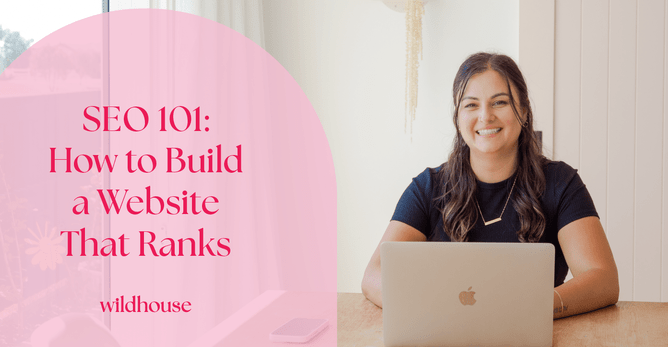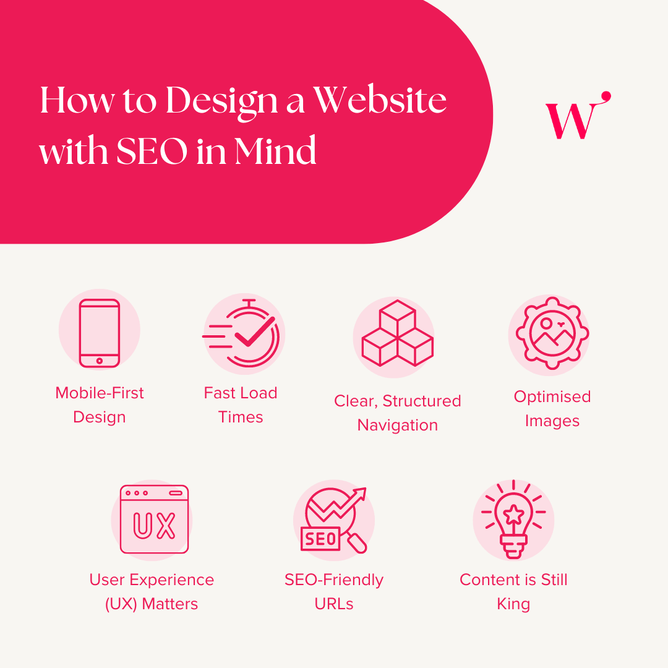A beautifully designed website is only half the battle. The other half? Making sure people can actually find it.
That’s where SEO (Search Engine Optimisation) comes in. But SEO isn’t just about keywords—it’s about building a website that’s optimised for both search engines and your users.
Why SEO Matters
Imagine pouring time and energy into creating a stunning website, only to have it buried under your competitors on Google. It’s not enough to simply have a beautiful site—if your audience can’t find you, then all that effort goes to waste. SEO is what helps your website rank higher in search results, making it easier for potential customers to discover you.
But SEO is no longer just about keywords and meta tags. Google’s algorithms are smart—they consider the structure, speed, and overall usability of your website when determining its ranking.
The more user-friendly and optimised your site is, the better chance you have of climbing those search engine rankings.
How to Design a Website with SEO in Mind:
Mobile-First Design. With more than half of all web traffic coming from mobile devices, it makes sense that Google prioritises mobile-friendly sites.
That means Google looks at your mobile site before it considers your desktop version. If your site isn’t responsive and mobile-friendly, you’re missing out on valuable search rankings.
Tip: Make sure your website is fully responsive, adjusting seamlessly to any screen size—whether it’s a smartphone, tablet, or desktop.
A mobile-first design ensures your website looks great and functions perfectly, no matter where your visitors are coming from, boosting your rankings and user experience.
Fast Load Times. Ever clicked away from a site because it took too long to load? You’re not alone—page speed is one of the most critical ranking factors for both Google and your visitors.
A slow-loading website frustrates users and sends them away before they’ve even had a chance to explore what you offer. The faster your site, the better your ranking.
Tip: Optimise your images, enable browser caching, and choose a fast, reliable hosting provider to keep your load times lightning-fast.
Faster load times mean happier visitors, reduced bounce rates, and better SEO rankings.
Clear, Structured Navigation. Your website’s structure doesn’t just matter for your users—it’s crucial for search engines too.
A well-organised site helps search engines crawl and index your pages more efficiently, improving your ranking. Clear navigation, logical headings, and internal linking guide both users and search engine bots through your content.
Tip: Implement a clean, intuitive navigation menu.
Visitors (and search engines) will be able to find what they need quickly, improving user experience and your site’s visibility in search results.
Optimised Images. Images can make or break your website’s performance.
Uncompressed, heavy images slow down your site, while optimised images keep it fast and sleek. Plus, descriptive alt text ensures your images are accessible to everyone, including search engines, which helps boost your ranking.
Tip: Use modern image formats for better compression and include keyword-rich alt text for every image on your site.
Fast-loading, SEO-friendly images keep your site performing at its best, improving accessibility and rankings.
User Experience (UX) Matters. Google rewards websites that provide a seamless, enjoyable user experience.
This means your site needs to be easy to navigate, visually appealing, and free from clutter like annoying pop-ups or broken links. The better your user experience, the more likely visitors are to stay longer, engage with your content, and come back.
Tip: Keep your design clean and simple, with clear CTAs (calls to action) that make it easy for users to take the next step.
A user-friendly website not only keeps visitors engaged but also signals to Google that your site is worth ranking higher.
SEO-Friendly URLs. Your URLs are another important piece of the SEO puzzle. Clear, descriptive URLs that include relevant keywords make it easier for both users and search engines to understand the content of each page. Avoid long, confusing strings of numbers and characters—simple, readable URLs are key.
Tip: Use hyphens to separate words in your URL, and ensure the URL isn't too long.
Content is Still King. At the heart of SEO is high-quality content. You can have the most optimised site in the world, but without valuable, relevant content, your rankings will suffer.
Create content that speaks directly to your audience’s needs, solves their problems, and keeps them coming back for more.
Tip: Do keyword research to find out what your audience is searching for, then incorporate those keywords naturally into your content. But remember, your content should always be written for humans, not just search engines.
Great content that answers your audience’s questions keeps them engaged and boosts your rankings by aligning with Google’s preference for user-first websites.
A high-ranking website isn’t just about SEO.
It’s about building a site that seamlessly integrates SEO with an exceptional user experience. When your website is optimised for search engines, you’ll attract more visitors. And when it’s designed with your audience in mind, you’ll keep them engaged and coming back.
If you’re ready to create a website that ranks high and delivers a superior user experience, we’re here to help. Let’s chat about how we can build a website that not only looks great but also gets results.



